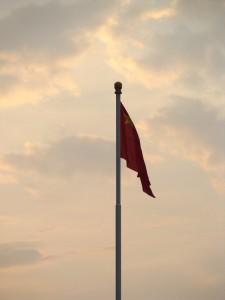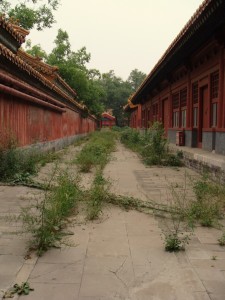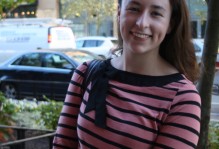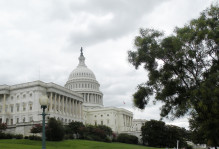Beijing Blog Part 10: Early Bird, Night Owl
June 27, 2009-(Qinghua University-Beijing, China)
Waking up at 3:30 on a Saturday morning, especially after going to sleep around 1 a.m. is quite the feat to some, but to William and Mary students on a mission, it’s was just another day experiencing the many faces of Beijing.
This weekend, me, along with a group of my fellow classmates, decided to welcome the weekend by going to see the

The raising of the flag early in the morning. Sunrise here is around 5 a.m.
raising of the flag ceremony at Tiananmen Square. Every day at sunrise, the Chinese military traditionally raises a Chinese flag while the national anthem of the country plays in the background.
But more interesting than the actual flag-raising itself, was the ride over to Tiananmen Square. With the cab driving at over 100 km/hr (we were a little late…) it was interesting to see a Beijing so…quiet. No neon signs were lighting the roads, and no cars were blocking the way, it really felt like the road was ours and we could drive wherever we wanted, however long we wanted.
Furthermore, you never notice how big Beijing is until you travel through it, and finally realize that it really only takes you 10 minutes to make it to the Forbidden City, not 30. But along the way are skyscrapers upon skyscrapers and apartment building upon apartment building.
And halfway between staring at the contemporary Beijing Children’s Hospital and many office buildings lining Tiananmen Highway, it suddenly also occurred to me that this city really has accomplished what many cities try to do but few seldom accomplish: balancing the traditional with the modern.
It’s not often that you see a city like Beijing, especially in East Asia. Tokyo is a sprawling metropolis that’s not much more than building after building cramped together. Taipei is not much different of a city. Really, it’s Beijing that has done a lot to keep its cultural relics together and weave it all into a true harmonious blend.
After the raising of the flag, my little group of six decided to go eat breakfast nearby and meet the rest of our program at the Forbidden City. The thing about the Forbidden City that one realizes immediately is the immense size of the entire place. The second thing that people realize, is that there are sections which are crowded, and sections which are not.
These little sections off in the corners of the Forbidden City are what I believe to be the “treasures” of the palace, the real jewels that few ever see. If you’ve never been to the Forbidden City, then of course, the large palaces of the emperor and his quarters are the key things to focus on, but these little side areas also offer their own little surprises. One just has to actively seek them out than to wait for them to come to you.
I had already visited the Forbidden City’s main attractions once before on a guided tour which I believed to be much too short and unfulfilling. Therefore, this time around, I made it my mission, of sorts, to scope out more, lesser known areas of the amazing complex. For me, the northeast corner of the palace was the destination that I wanted to reach for this time around.

An unrestored section of the Forbidden City taken through one of the doors in the NE corridor.
In the Forbidden City, the northeast and northwest corners consist of dozens of mansions where the personal concubines to the emperor traditionally lived. Each courtyard is similar in structure, shape, and size, but each concubine’s living quarters also had interesting ways in which each differed. One courtyard would have a burnt down early 20th century Victorian structure while another had traditional architecture.
All in all though, I feel like the Forbidden City is an attraction that has become too overpopulated with tourists in Beijing. I feel like overall, Beijing has a lot more to offer than just the Forbidden City. Though I don’t doubt that the structure itself has had a profound impact on the course of history, I feel like Beijing itself as a city has much much more to offer than the structures that stand out the most from the skyline. I yearn to find these places in the days to come.
(Blogger’s Note: This Friday, July 3, 2009, our program is going on a study tour of rural and urban China. I do not plan to take my laptop along with me, so I won’t be posting blogs until the 13th. I’ll be sure to write on what I’ve found on this trip as soon as I return!)



No comments.
Comments are currently closed. Comments are closed on all posts older than one year, and for those in our archive.